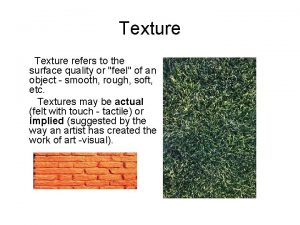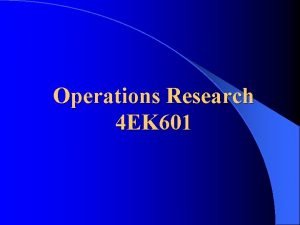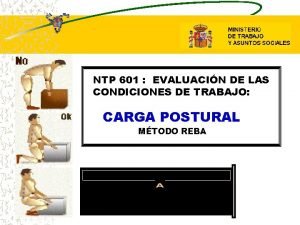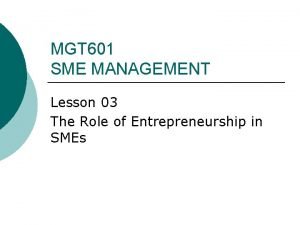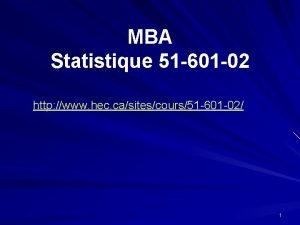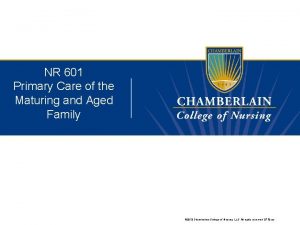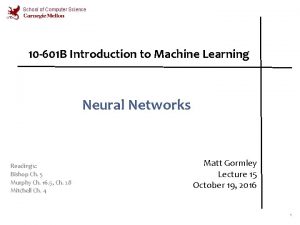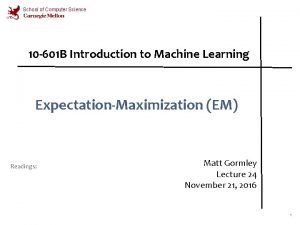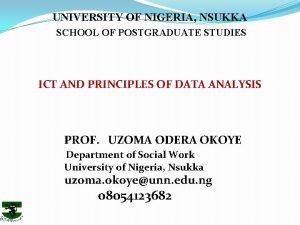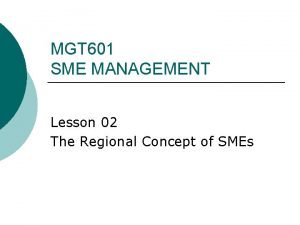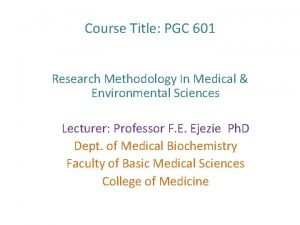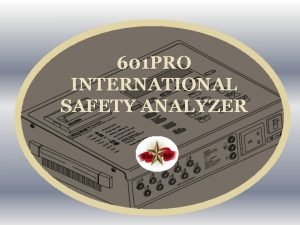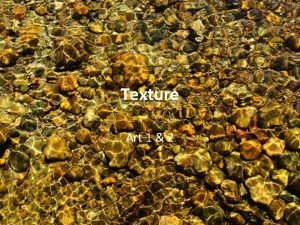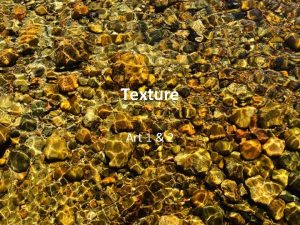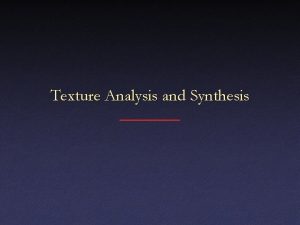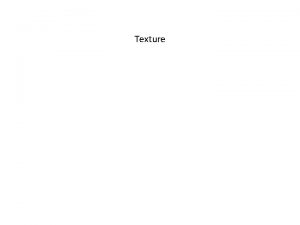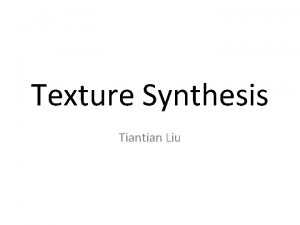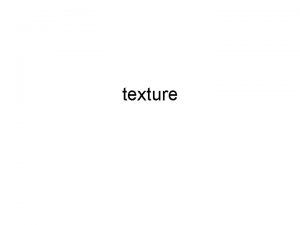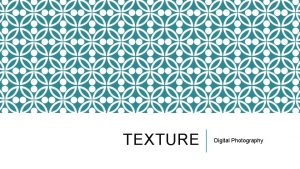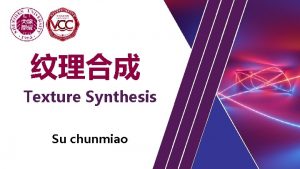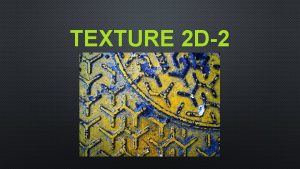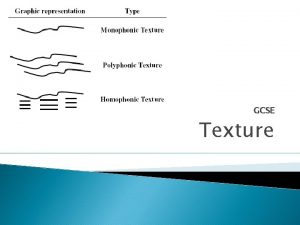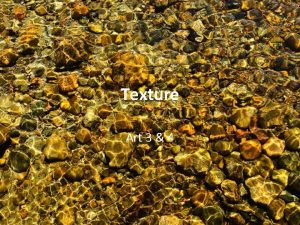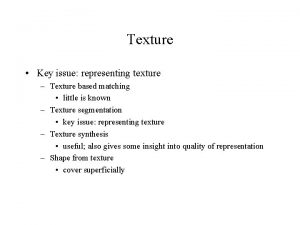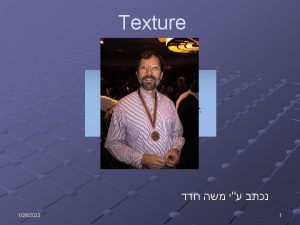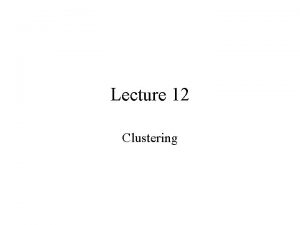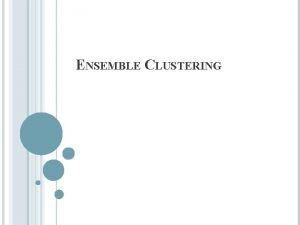Texture Detection Texture related clustering C 601 Project

















- Slides: 17

Texture Detection & Texture related clustering C 601 Project Jing Qin Fall 2003

Outline Ø Introduction Ø PCA based texture representation Ø Texture detection Ø Texture related image clustering Ø Future works

Introduction Ø What is “textures”? l Webster’s: • Something composed of closely interwoven elements • The structure formed by the threads of a fabric • The visual or tactile surface characteristics and appearance of something • Etyma: L textura, fr. Textus, (to weave) l Others: grain, pattern of wood, water, granite

Introduction (Cont. ) Ø CS Definition: l Formalized terms: • Basic elements l l Pixels Small patterns • Relations (repetition) of elements l l l statistics grammar Descriptive Def: • Those similar enough to a set of textures samples would be of the same textures • What do we mean by saying: “similar”, then?

Introduction (Cont) Ø Statistical Texture Description l l spatial frequencies Edge frequencies Primitive length ……. Ø Syntactic texture description l l Shape chain grammars Graph grammars

Texture Representation Ø PCA (Principal Component Analysis): l l l Project the samples (points) perpendicularly onto the axis of ellipsoid Rotates the ellipsoid to be parallel to the coordinate axes Use the fewer and more important coordinates to represent the original samples Ø Transforms of PCA: The first a few eigenvectors of covariance matrix

Texture Representation (Cont. ) Ø How to represent textures using PCA? l l Select primary textures (6, 7) we need to consider (manually) Use texture samples (16× 16 texture images) as points in PCA Compute the eigenvector (PCA transform) using those 6 or 7 256 dimensional vectors with PCA. Use the Eigen-textures generated through PCA transform as the texture representation

7 primary textures (16*16 blocks) manually selected to compute through PCA -2. 9768 2. 5950 0. 0013 0. 0324 -0. 0120 -0. 0000 6 - dimensional Eigen textures generated for the texture No. 1 (256 -dim converted to 6 dim)

Texture detection Ø Compare the image to the texture representation (similarity match) Ø Texture detection based on PCA l l PCA Transform Compare Eigen-images to Eigen-textures • Euclidean distance l Texture Segmentation

Texture Detection (1 st Ver) Dividing the target image into (overlapping) blocks with the same size as the 7 primary textures, use the PCA transform and compare them to the eigen-textures (compute the euclidean distance) Only use texture detection, 6 clusters generated

Revised Version Ø Revised version l l Intuition: reduce the influence of light condition Calibrate (Generalize) grey level with the texture sample before using PCA • Check the grey level difference • Reduce/increase the grey level of the image blocks accordingly l l Better? Problems?

Texture related image clustering Ø Color clustering Method used l k-mean Ø Use texture information as fourth dimension (colors as the other three) Ø Add certain weight to the fourth dimension (200 or 300, why? ) Ø Evaluation of textures information l The more two textures are similar to each other, the closer their ‘texture’ value should be

Results of Original K-mean PCA-clustering results (4 dimension, without formalizing grey level)

Final version of clustering First use (grey level) formalized PCA texture detection, then cluster using k-mean, based on texture information combined with 3 color dimensions,

Future Works Ø Texture is not only repeated elements l l Reflectivity & refractivity Combination of other texture principles Ø Samples size l l Large Small Ø Samples selection Ø Problems with PCA: scalability

Reference Ø Image Processing, Analysis, and Machine Vision Milan Sonka, Vaclav Hlavac, and Roger Boyle 1998 Ø http: //www. cs. berkeley. edu/~daf/bookpage s/slides. html Ø Merriam-Webster’s Collegiate Dictionary, Tenth Edition

 Flat vs hierarchical clustering
Flat vs hierarchical clustering Partitional clustering
Partitional clustering Rumus euclidean distance
Rumus euclidean distance Two types of fitness components
Two types of fitness components Health vs skill related fitness
Health vs skill related fitness Implied texture
Implied texture Jaynell pittman
Jaynell pittman Ek601
Ek601 Ntp 601
Ntp 601 Mgt 601
Mgt 601 Http 601
Http 601 Nr 601 test bank
Nr 601 test bank Backpropagation logistic regression
Backpropagation logistic regression 601(b)(10)
601(b)(10) Pgc 601
Pgc 601 Sme management definition
Sme management definition Pgc 601
Pgc 601 601 pro
601 pro





